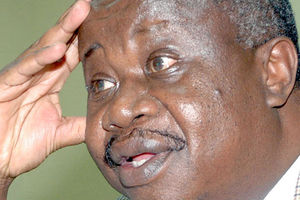
The Ugandan government agrees that corruption wastes public resources, destabilises countries, and impedes good governance. That is why it has come up with several solutions that will hit corruption between the eyes, hard.
We understand that the corrupt would have preferred that last sentence to end with the word “hardly” instead of “hard”.
But Uganda cannot afford to go soft on corruption. Unless, of course, going soft means the exact opposite.
You know, like how good means bad when Mzee is describing members of the Democratic Party who he can work with.
Anyway, here are some of the solutions Uganda has set in train to keep the possibility of a clean government on track:
Strengthen regimes to prevent corruption, bring culprits to justice
An anti-corruption regime refers to the legal frameworks, institutions, and capacities that our government has enacted and sustained to prevent, detect, and prosecute corruption.
To strengthen this regime, the ruling National Resistance Movement (NRM) favours a policy hinged on cadre identification, cadre development and cadre placement.
This hat trick of initiatives scores highly as the NRM becomes both cure and disease. This is how vaccines work, teaching the immune system how to fight off a disease in case it ever comes into contact with it by introducing the disease to the immune system in its weakened form.
The only problem here is that the disease is yellow, and feverishly combating the cure. That’s because the cure is red. And it is coloured by the red dawn of post-Mzee rule.
Denying haven
Denying corrupt individuals access to national and global financial systems. This sends a strong message about Ugandan values, and it demonstrates in meaningful ways that there are consequences for those who engage in corruption.
The NRM’s position here is crystal clear.
It is creating two classes: the havens and the haven, nots. The havens are for the have-nots and the haves will be denied haven.
So those who have stolen will be haven-deprived and those who have not (and so have nothing) will enjoy a fresh dispensation that is truly haven-sent.
Setting up commissions of inquiry
There was a British political TV show called Yes, Minister comprising three seven-episode series, it was first transmitted on BBC2 from 1980 to 1984.
In it, the minister’s advisor Humphrey Appleby said: “Minister, two basic rules of government: Never look into anything you don’t have to. And never set up an enquiry unless you know in advance what its findings will be.”
Accordingly, the government is setting up another commission of inquiry and it will be chaired by the speaker.
She will be charged with the duty of asking herself is she is guilty or innocent. To achieve this, a mirror shall be placed before her. Thence she will peer in it and say: “Mirror, mirror on the wall, who’s the fairest of them all?”
Deciding what corruption is
None of us are sure what corruption really is. That is because the government tells us that it will crush the corrupt. Yet we are sure the corrupt are in government. So who is who?
We also know that there is such a thing as the corruption of power. It comes from a monopoly of power.
The NRM has been in power since 1986. By extension, is the NRM corrupt?
To compound matters, Mzee came to power in January 1986.
The same year and month former Mafia supremo John Gotti became boss of the Gambino crime family.
Before that, it was an open secret that Gotti was acting boss in all but name. This is a bit like Mzee until January 21, 1985.
Anyway, Gotti was formally acclaimed as the new boss of the family at a meeting of 20 capos held in January 1986.
So we are confused.
If the American Mafia elevated Gotti to become boss in 1986 and NRM has been our political boss since 1986. Was 1986 the year of the Mafia?




